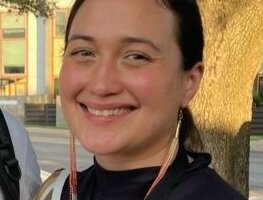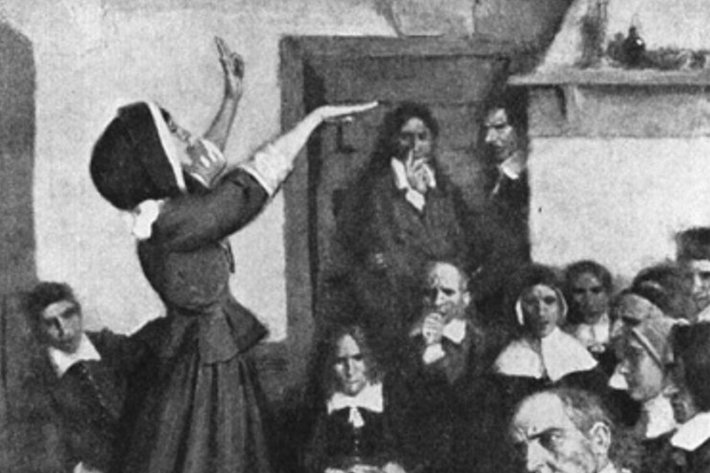It started in 1990. The Native American Graves Protection and Repatriation Act (NAGPRA) charged museums and other such institutions to return human remains, funerary objects and other sacred items to tribes. Very little happened as red tape and resistance took their toll. Then this January, new regulations went into effect that gave the old law some teeth, putting institutions on notice with a five-year deadline to prepare all items for repatriation and giving more authority to tribes in that process.

This last is vital, for Native history is largely oral—something that non-Native scholars quail at. Something not backed up by footnotes and academic studies is not considered worth considering. But the new regulations require curators and officials to “defer to the Native American traditional knowledge of lineal descendants, Indian Tribes and Native Hawaiian organizations.”
“We can say, ‘This needs to come home,’ and I’m hoping there will not be pushback,” Myra Masiel-Zamora, an archaeologist and curator with the Pechanga Band of Indians, said.
As a result, museums are covering up or closing off entire exhibits of Native Americana while awaiting consent from tribes before displaying some artifacts and responding to demands to return others.
New York City’s American Museum of Natural History—one of the most popular museums in the world, with 4.5 million visitors a year—will close two major halls—nearly 10,000 square feet—exhibiting Native American objects. “The halls we are closing are artifacts of an era when museums such as ours did not respect the values, perspectives and indeed shared humanity of Indigenous peoples,” Sean Decatur, the museum’s president, wrote in a letter to the museum’s staff. “Actions that may feel sudden to some may seem long overdue to others.”
Other museums are hastily doing likewise. These include Chicago’s Field Museum, Harvard University’s Peabody Museum of Archaeology and Ethnology, the Cleveland Museum of Art, and New York’s Metropolitan Museum of Art.
Much of the material—human remains included—were garnered through unsavory means. Grave robbing and archaeological digs that destroyed Indigenous burial grounds, but not before looting them, are just two of the once-accepted practices.
“This is human rights work, and we need to think about it as that and not as science,” said Candace Sall, the director of the Museum of Anthropology at the University of Missouri, which is still working to repatriate the remains of more than 2,400 Native American individuals.
The repatriating of human remains is the most overdue, largest and most sobering task of all. According to a NAGPRA report, published last fall, there are more than 96,000 Native individuals whose remains are in the vaults, cellars and storage facilities of museums. In more than 30 years since NAGPRA was passed, the American Museum of Natural History has repatriated the remains of about 1,000 individuals to tribal groups but has 2,200 more and thousands of funerary objects.
Scott Willard, who works on repatriation issues for the Miami Tribe of Oklahoma, feels that the rush to comply with the new regulations, along with the fear among tribal officials of a coming avalanche of requests from museums for information, made it sound as if Native ancestors were “throwaway items.”
“This garage sale mentality of ‘give it all away right now’ is very offensive to us,” Willard said.
But, included in the new regulations is the proviso that, with the agreement of the tribes they consult with, institutions can get extensions to their deadlines. In this way, museums and other institutions are still held accountable without overburdening tribes.
Bryan Newland, the assistant secretary for Indian Affairs and a former tribal president of the Bay Mills Indian Community, said the priority in drawing up the rules in consultation with tribal representatives was for Native ancestors to recover dignity in death.
“Repatriation isn’t just a rule on paper,” Newland said, “but it brings real meaningful healing and closure to people.”
And, “We’re finally being heard,” added Myra Masiel-Zamora, “and it’s not a fight, it’s a conversation.”
_________________
From its beginnings, the Church of Scientology has recognized that freedom of religion is a fundamental human right. In a world where conflicts are often traceable to intolerance of others’ religious beliefs and practices, the Church has, for more than 50 years, made the preservation of religious liberty an overriding concern.
The Church publishes this blog to help create a better understanding of the freedom of religion and belief and provide news on religious freedom and issues affecting this freedom around the world.
The Founder of the Scientology religion is L. Ron Hubbard and Mr. David Miscavige is the religion’s ecclesiastical leader.
For more information, visit the Scientology website or Scientology Network.


